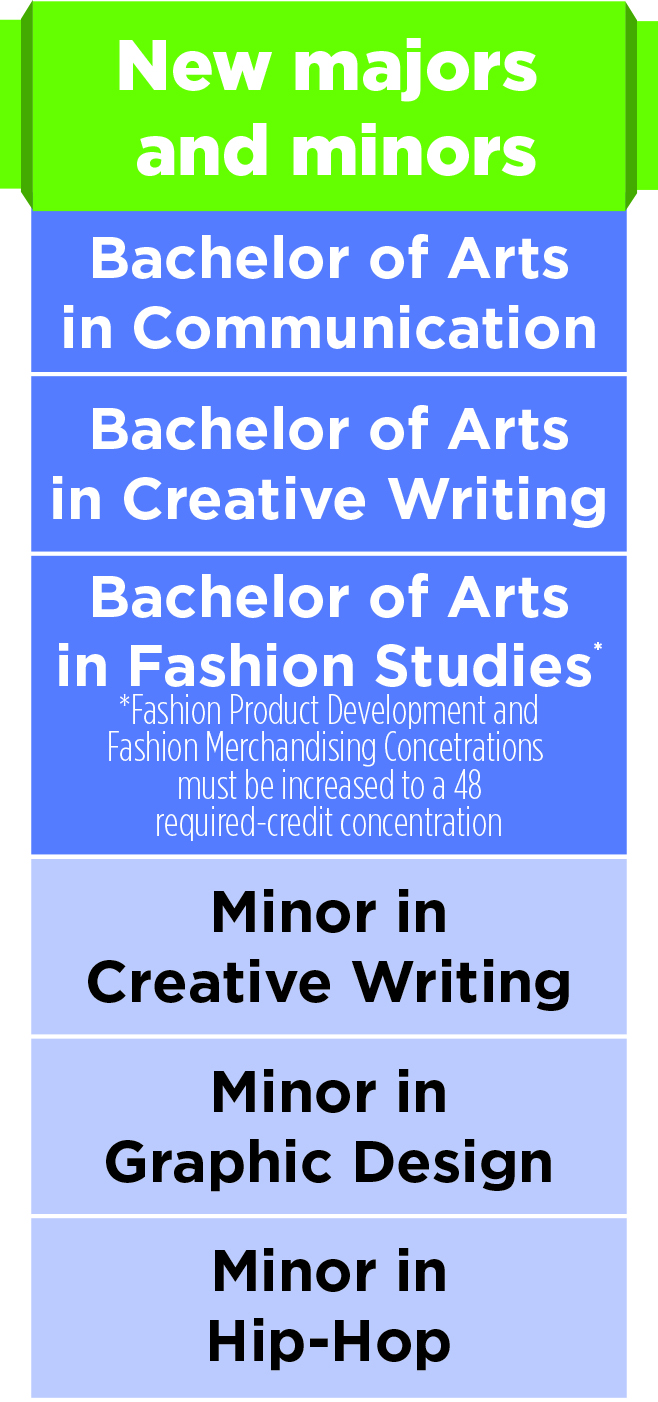New programs get green light, fashion studies major approved with conditions
February 6, 2017

New programs get green light, fashion studies major approved with conditions
Three new majors and three new minors will be incorporated into Columbia’s curriculum in Fall 2017 after a unanimous decision from the Office of the Provost announced in a Jan. 26 email.
The new curricular choices, which were officially approved Dec. 8, 2016, include undergraduate degrees in communication, creative writing and fashion studies as well as minors in creative writing, graphic design and hip-hop. The new curricular options will primarily use existing classes for course requirements.
All but one of the new curricular options were approved without amendment from Senior Vice President and Provost Stan Wearden meaning no changes were made to the curriculum presented by the department besides the Bachelor of Arts in fashion studies degree.
The provost’s amendment, according to the email, requires students pursuing the fashion product development concentration and the fashion merchandising concentration to take 48 required credit concentrations, three more than the proposed 45. According to the announcement, the hours were added because concerns had been raised about an insufficient number of required courses in the two concentrations included in the major.
Despite multiple requests, Interim Chair of the Fashion Studies Department Jeff Schiff did not respond to requests for comment on the changes to the curriculum as of press time.
Columbia’s News Office declined interviews on behalf of Wearden and Senior Associate Provost Suzanne Blum Malley regarding the curricular changes and the fashion studies amendments.
Though members of the Fashion Studies Department expressed concern about the Bachelor of Arts in Fashion Studies degree, the department approved the program and sent the curricular plans to the Provost, as reported Dec. 16, 2016, by The Chronicle.
The News Office sent a Jan. 31 emailed statement in lieu of interviews with the administration.
“As with all curricular proposals, these curricular changes went through a thorough, rigorous and multi-stage review process, which fully adheres to the principles of shared governance,” the statement said.
Suzanne McBride, chair of the Communication and Media Innovation Department, said she hopes the new communication major will give prospective students more reasons to attend Columbia.
According to McBride, the program requires only 39 credit concentration hours, out of the 120 total hours needed for most bachelors’ degrees, which allows students to pick up a minor and gain specialization beyond the major. McBride added that she has found that employers tend to be interested in skill sets beyond a student’s main area of study.
“We were very conscious and careful about keeping the credit hours to a point where you would have a fair amount of choice beyond that,” McBride said.
The graphic design minor also aims to expand the skill sets of students, in order to be more competitive, according to Matt Doherty, acting chair of the Design Department. Doherty said part of the department’s incentive to create the minor came from other departments calling for minors that would make students more employable.
“You can be in almost any other department, and there would be an argument for having a minor in graphic design,” Doherty said. “If you go into any of those other enterprises, it gives you a skill set—especially at the entry level—which makes you more valuable.”
Peter Carpenter, interim chair of the Dance and Theatre departments, said he hopes the new hip-hop minor will potentially draw students into the Dance Department who are potentially from other programs.
The new minor was announced at a Feb. 1 departmentwide meeting, and Carpenter said students seemed very excited about the new option.
“One of the things that was apparent as this was being put together is there was already a fair amount of coursework in majors where students could study different facets of hip-hop,” he said. “The goal here is to bring more of those together.”
According to the Jan. 31 emailed statement, the changes in curriculum fit into the college’s Strategic Plan by better preparing students for careers and giving them an understanding of diversity, equity and inclusion.
“The changes do an outstanding job of addressing the [Strategic] Plan’s objectives: to fully serve our students by being current, relevant and intentional, and to better prepare students for entering society with career-readiness,” the statement said.







